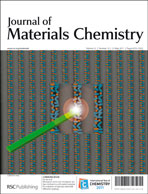Nanoscale helices from inorganic materials
Abstract
Helical structures with their unique topology have attracted broad attention during the past decade. Rotational symmetry, chirality, and unusual mechanical properties are just a few attributes associated with helical geometry that make it special for materials science. Typically helical geometry was the domain of biological systems which provided in the past amazing examples of their structural diversity. Nowadays, the effective synthesis strategy allows the production of various inorganic helical structures and the recent development of nanotechnology provides additional possibilities to control helical structures at different scales reaching, in fact even greater diversity than those seen in biology. Understanding what kind of helical inorganic nanoscale materials are available and why different kinds of inorganic helices exist are the two fundamental topics of this review. Surveying this information sheds light on the possibilities for materials using new helical structures and provides general principles for their preparation. Necessary improvements and further developments of their synthetic protocols, structural features, and properties are also indicated.


 Please wait while we load your content...
Please wait while we load your content...